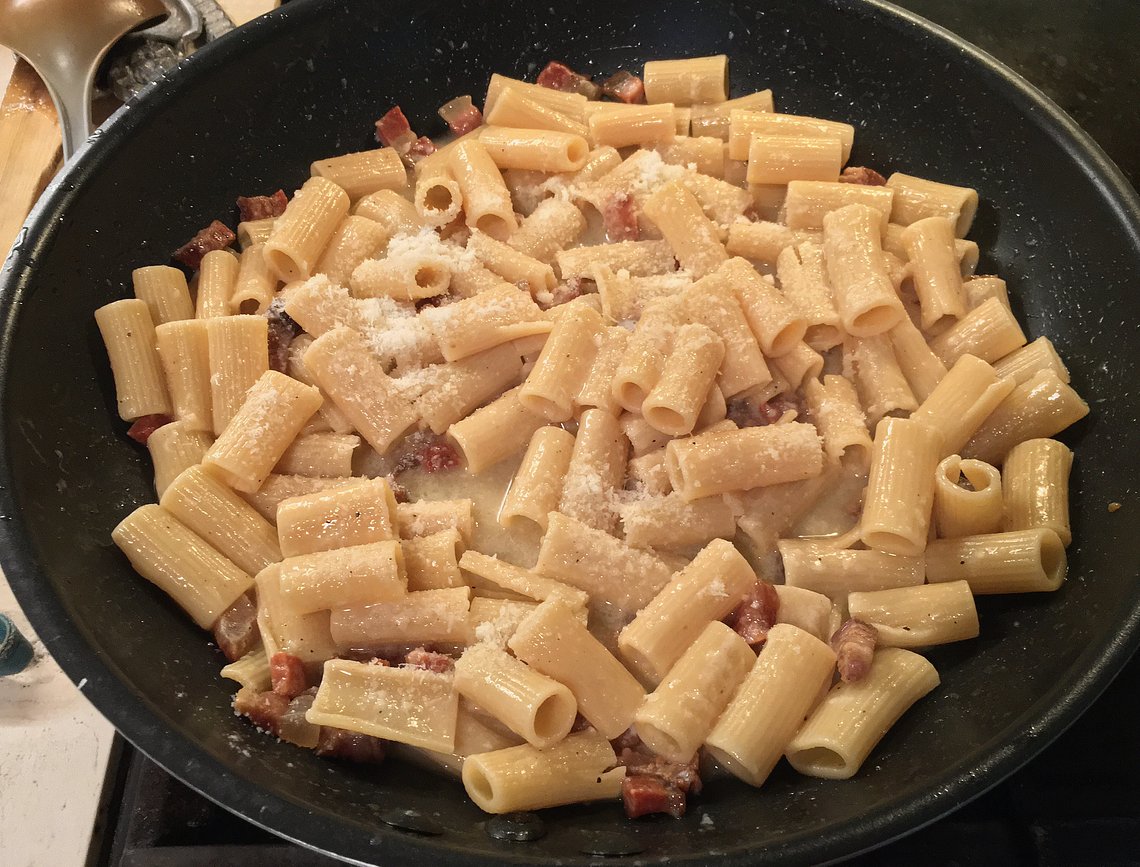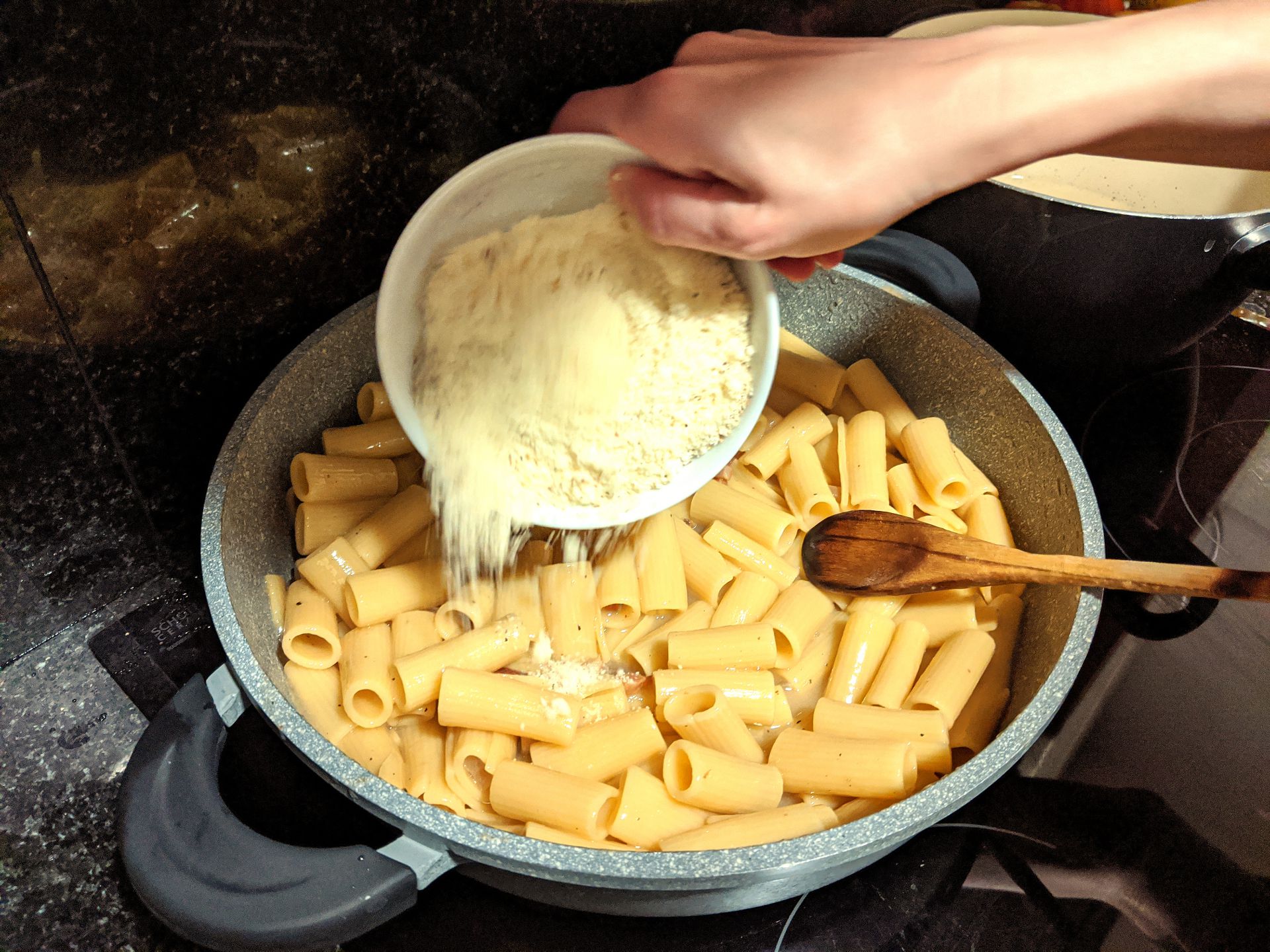Recipe: Pasta alla Gricia, and Rome’s 'Famous Four'
A lip-smacking quartet of pasta dishes lies at the heart of Roman cuisine. But while three are well known outside of Rome and even abroad, Gricia has always flown under the radar.

Posted on Wed 11 Jun 2025 · by Oliver Haenlein
The Eternal City's famous Carbonara, beyond just being popular in restaurants, is part of most home cooks’ repertories from Birmingham to Bangkok these days. Many food lovers will also be aware of Amatriciana and Cacio e Pepe. But not the fourth, poor old Gricia, even though it’s not only a wonderful eat, but an ancient dish of historical significance - unlike many Italian sauces it doesn’t include tomatoes due to the fact the recipe predates tomatoes’ importation to Europe! They say it was a dish that shepherds in the Lazio region around Rome conjured up with the few but delicious ingredients they had to call on.
Let’s first establish what goes in which of all of these four Roman pastas. All have some ingredients in common, just in differing quantities and in combination with others. Cacio e Pepe, the simplest of all, is simply cheese and pepper. Cacio, an ancient Roman word for cheese, refers to Pecorino Romano, an aged sheep’s milk cheese which is used similarly to Parmesan, but has more intensity and pungency. All of our four pastas contain this ‘cacio’, and black pepper is also omnipresent in our four pastas.
Cacio e Pepe is the only vegetarian option, as the other three involve rich and delicious guanciale, a cured pig’s cheek product similar to pancetta; cut into ‘lardons’ and panfried as a base to the sauces. Amatriciana is the only ‘red’ sauce, combining tomatoes with the ‘cacio’ cheese, guanciale and pepper. Meanwhile carbonara sees egg join the party instead of tomato, but still with guanciale, cheese and pepper. Today’s star, Gricia, uses just the cheese, pepper and the guanciale. Are you still with me?! It’s a Carbonara without the egg, an Amatriciana without the tomato, or a Cacio e Pepe with added guanciale! So we can think of it as kind of a ‘bridge’, it’s for when you don’t fancy a sweet tomato sauce like Amatriciana, for when Carbonara is too rich and eggy, or when Cacio e Pepe needs a bit of meatiness!
However you want to look at Pasta all Gricia, it deserves at least some of the respect the the others get. It’s an excellent representation of the beauty of Italian simplicity, the sauce has just three ingredients, all sourced well and prepared with care. With an outcome that’s pretty hard to beat.
Like with Cacio e Pepe, the cheese makes up a fundamental part of our sauce, and this kind of cheese ‘splits’ easily - when the cheese overheats it creates globules, becomes stringy, and we lose the emulsified, creamy consistency we’re looking for. So in the recipe below I’ll explain how to perfect this and make it nice and smooth. You don’t ‘cook’ the sauce as such, you combine the parts.
The less ingredients you have to work with, the fewer places you have to hide. This is one of the things I love about Italian cooking, where the tendency is to take away rather than to add, and the results are usually elevated. The issue is the mistakes are easier to see too - which makes simplicity not always easy to do well!
Don’t overthink the pasta shape you put with this, it will work fine with long or short pasta. I think a great match would be rigatoni or simply spaghetti.

Pasta alla Gricia
Serves 4
- Dried pasta - rigatoni or spaghetti, for example, of a quantity suitable to your appetites (usually 300-400g for 4 servings)
- 100g Pecorino Romano cheese, grated (if you have no access to this, try with Parmigiano, or a mix of Parmigiano and any type of pecorino you can get your hands on)
- 200-250g Guanciale, depending on how rich you want the dish to be, cut into small lardons (Pancetta is a Plan B for this, but won’t properly do the sauce justice)
- Freshly ground pepper
1. Start cooking your pasta in well salted boiling water
2. Meanwhile, fry the guanciale in a good sized pan over a medium/high heat. A lot of fat will come out of the guanciale, so you don’t need to start the pan off with any oil. When it is golden and crispy, turn the heat off. Remove the guanciale with a slotted spoon and place on some kitchen paper, leaving the fat in the pan.
3. Allow the fat to cool in the pan for a few minutes, then add a small ladleful of the pasta cooking water and swirl the two together well. They should emulsify a little as they mix, creating a creamier sauce mixture.
4. Once the pasta is cooked (make sure it’s al dente), drain and transfer into the pan with the guanciale fat. Reserve a cup of the pasta cooking water as you drain. Add a generous amount of freshly ground black pepper to the pasta. Switch the heat back on to medium, and while heating, sautee/toss/mix the pasta and guanciale fat mixture together well in the pan, until the ‘sauce’ coats the pasta. There should be just a little liquid in the pan - if it’s completely dry, add another small ladle of the reserved pasta cooking water. Turn off the heat, and add the grated pecorino (if we use too much direct heat at this stage, the cheese will split). Mix well - the cheese will gently melt into the pasta and sauce to create a ‘cream’. Finally mix in the crispy guanciale, and serve.
